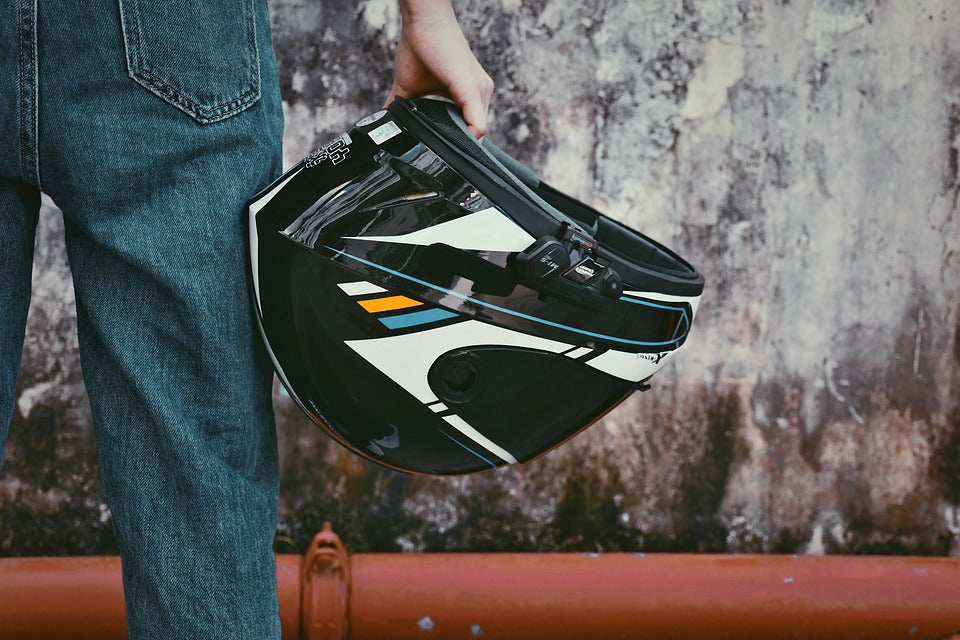Bike helmet painting is more than a way to protect your head—it’s a canvas to showcase your creativity and individuality. Personalizing safety gear with helmet art enhances not only its aesthetic appeal but also makes it easier to identify in a crowd. Beyond style, custom helmet designs can improve visibility, adding an extra layer of safety on the road. Whether you’re a seasoned artist or a beginner, creating decorative bike helmets can be a fun and rewarding project.
Materials Needed
Before diving into the creative process, gathering the right materials is essential. The quality of your tools and supplies directly impacts the outcome of your project. Below is a comprehensive list of items needed to get started:
-
Basic Supplies
-
Acrylic paints (durable and vibrant)
-
Primer (white or clear)
-
Clear coat (matte or glossy finish)
-
Paintbrushes (various sizes for detailing and coverage)
-
Painter’s tape for masking areas
-
Optional Tools
-
Stencils for consistent patterns
-
Vinyl stickers for added flair
-
Fine-tip markers for outlining designs
-
Airbrush equipment for smooth gradients
-
Additional Items
-
Sandpaper (medium and fine grit)
-
Cleaning solution (mild soap or isopropyl alcohol)
-
Soft cloth for cleaning and polishing
Having these materials on hand ensures a seamless creative process, allowing you to focus on bringing your vision to life.
Preparing Your Helmet
Preparation is the foundation of a successful bike helmet painting project. Here’s how to get your helmet ready:
-
Clean the Surface
-
Wash the helmet with mild soap and water to remove dirt, grease, or dust.
-
Wipe it down with isopropyl alcohol for a squeaky-clean surface.
-
Sand the Helmet
-
Use medium-grit sandpaper to lightly sand the helmet, ensuring the paint adheres properly.
-
Smoothen the surface with fine-grit sandpaper for a polished finish.
-
Mask Unpainted Areas
-
Cover the interior padding, straps, and vents with painter’s tape or plastic wrap.
-
Clearly define the sections you plan to paint.
-
Apply a Primer Coat
-
Use a primer to create a uniform base for painting. Allow it to dry completely before proceeding.
Proper preparation not only enhances the durability of your design but also ensures a professional finish.
Design and Planning
Creating a compelling design requires thoughtful planning. Follow these steps to unleash your artistic potential:
-
Sketch Your Ideas
-
Draft your design on paper to visualize the layout and proportions.
-
Experiment with color combinations and themes.
-
Choose a Theme
-
Consider personal interests, hobbies, or favorite motifs (e.g., nature, abstract art, or pop culture).
-
Use Templates and Stencils
-
Stencils can help achieve precision and consistency, especially for intricate patterns.
-
Templates can be created from cardboard or downloaded online for specific designs.
By planning your artwork beforehand, you minimize errors and maximize the impact of your helmet art.
Painting Techniques
The painting phase is where creativity takes center stage. Here’s how to apply your design step-by-step:
-
Base Coating
-
Apply a solid base coat using spray paint or a broad brush. This serves as the background for your design.
-
Allow the base coat to dry thoroughly.
-
Detail Work
-
Use smaller brushes for intricate designs and fine details.
-
For smooth gradients or fades, consider using airbrush techniques.
-
Layering Colors
-
Apply multiple thin layers rather than one thick coat to prevent dripping.
-
Let each layer dry completely before adding another.
-
Clean Edges
-
Use painter’s tape to define sharp lines and borders.
-
Remove the tape carefully to avoid peeling off paint.
With patience and practice, these techniques can bring even the most ambitious designs to life.
Applying Finishes
Finishing touches are crucial for preserving your artwork and enhancing its appearance. Follow these steps:
-
Seal the Design
-
Apply a clear coat to protect the paint from chipping, scratches, and environmental factors.
-
Choose between a matte or glossy finish based on your preference.
-
Curing the Helmet
-
Allow the helmet to dry in a well-ventilated area for at least 24 hours.
-
Apply a second layer of clear coat for added durability.
-
Polishing the Surface
-
Buff the surface gently with a soft cloth to achieve a professional finish.
Proper finishing ensures that your decorative bike helmet maintains its brilliance and integrity over time.
Customization Ideas
Looking for inspiration? Here are some popular themes and ideas for custom helmet designs:
-
Minimalist Designs
-
Clean lines and simple patterns, such as geometric shapes or monochrome tones.
-
Nature-Inspired Motifs
-
Floral patterns, mountain landscapes, or ocean waves.
-
Pop Culture Themes
-
Iconic characters, logos, or symbols from movies, games, or comics.
-
Abstract Art
-
Splashes of vibrant colors, unique patterns, and bold textures.
Exploring these themes can spark creativity and help you craft a helmet that truly stands out.
Maintenance and Care
Maintaining your custom helmet is key to preserving its beauty and functionality. Here’s how:
-
Cleaning Tips
-
Use a soft, damp cloth to wipe away dirt and dust.
-
Avoid harsh chemicals that could damage the paint or clear coat.
-
Storage Suggestions
-
Store the helmet in a cool, dry place to prevent fading or cracking.
-
Use a helmet bag or cover to protect it from scratches.
-
Touch-Ups
-
Keep extra paint on hand for quick fixes in case of chips or wear.
Following these tips will keep your decorative bike helmet looking as vibrant as the day it was created.
(Source: @atouchofsam)
Transforming a plain helmet into a work of art is a fulfilling way to merge creativity and functionality. With careful preparation, thoughtful design, and proper techniques, anyone can master bike helmet painting. Custom helmet designs not only elevate your style but also ensure visibility and safety on the road.
For high-quality paints and tools tailored for projects like these, Angelus Direct offers an extensive range of customization products to help bring your ideas to life.
FAQs
1. What kind of paint is best for bike helmet painting?
Acrylic paints are ideal for helmet art due to their durability and vibrant colors. Consider using specialized products for long-lasting results.
2. How long does it take to paint a bike helmet?
The process can take a few days, including preparation, painting, and curing time. Each step requires patience for the best results.
3. Can I use spray paint for custom helmet designs?
Yes, spray paint works well for base coats and larger areas. Pair it with stencils for precise designs and consistent application.
4. How can I ensure my helmet art lasts longer?
Sealing your design with a high-quality clear coat is crucial. Products like those available at Angelus Direct can help protect your artwork effectively.
5. Is it safe to paint bike helmets?
Yes, as long as the structural integrity of the helmet is not compromised. Ensure the paint and primer used are suitable for the helmet material.

